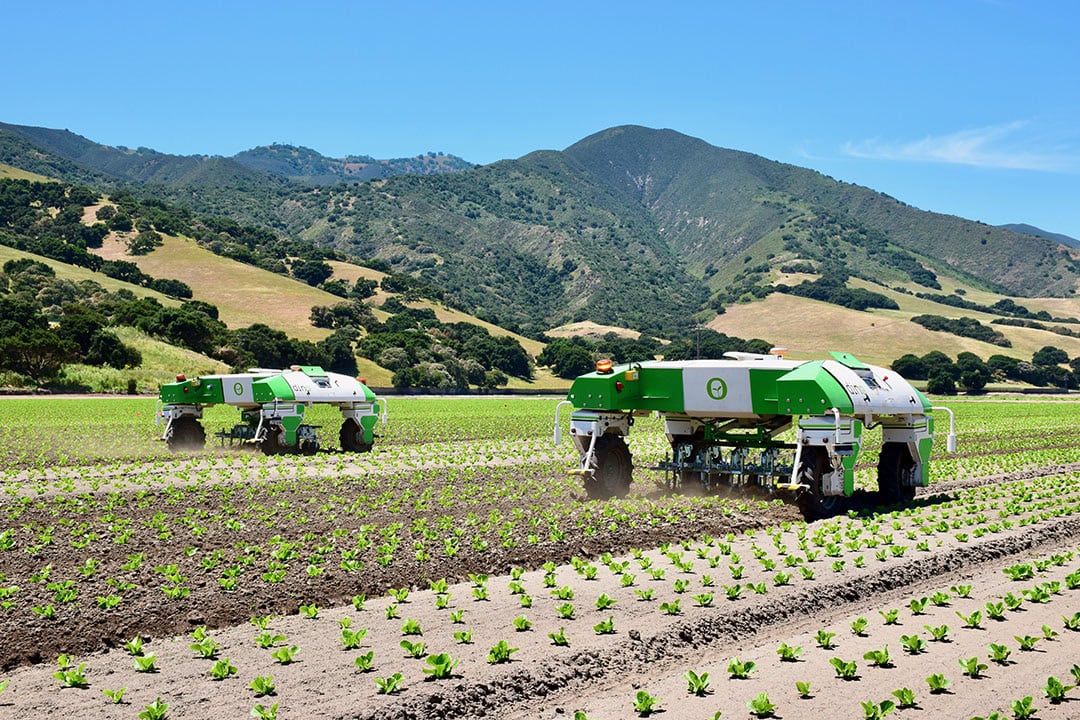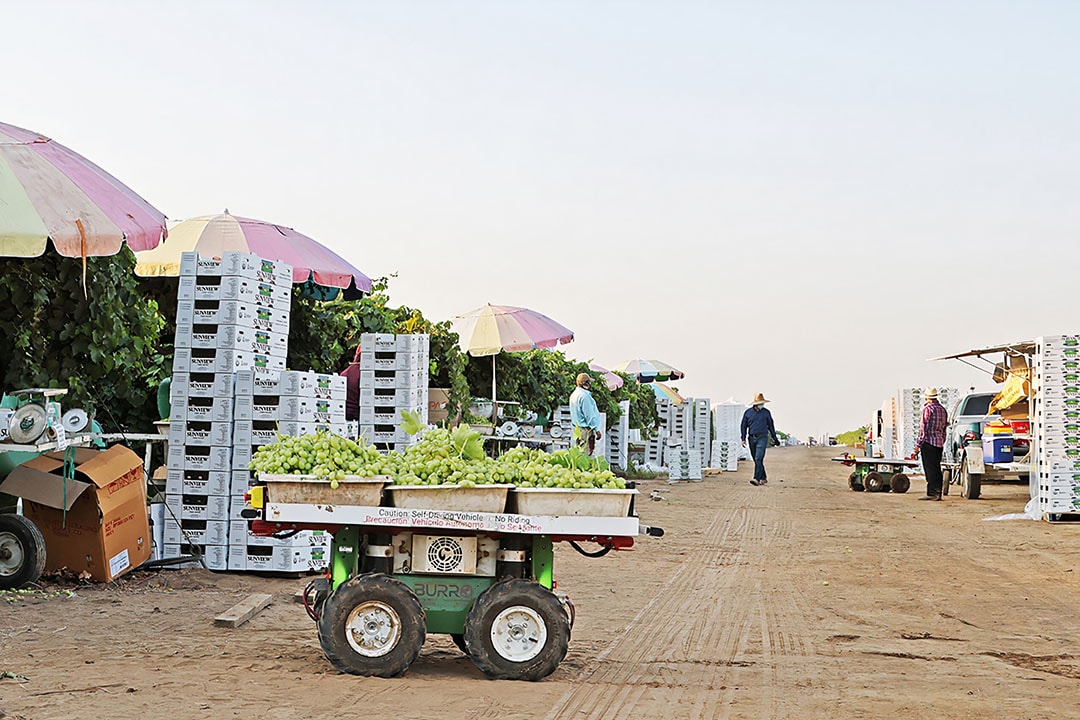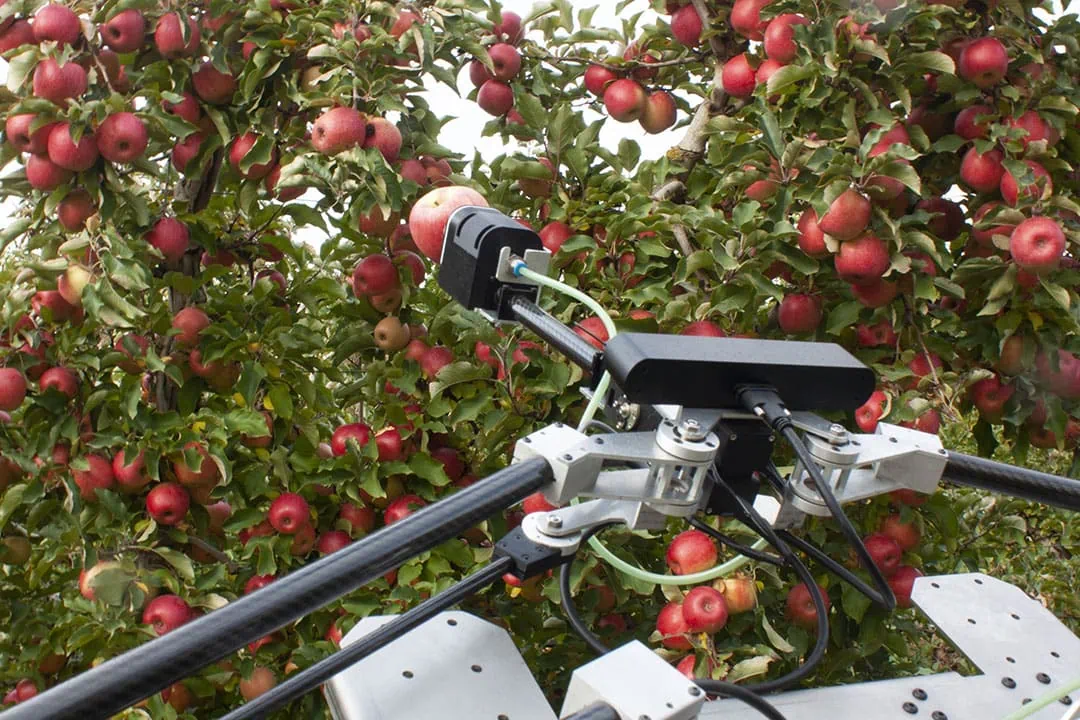Off-the-shelf components to speed up harvest automation

For start-ups of harvesting robots, scaling and technical complexity are big challenges. Making plug-and-play robot parts widely available can be one of the tactics to speed up automation, according to Walt Duflock, Western Growers VP of Innovation.
California-based Western Growers wants to offer start-ups a platform that gives them a set of prebuild off-the-shelf components for 80% of their technology. This could save every start-up 8 to 12 million dollar in research & development costs and two to four years in roadmap time. The platform would be a private and public joined effort.
“The reactions have been very positive”, Mr Duflock says in a recent Western Growers podcast. “If this platform has the right approach for harvest, we can get the right results. And we’re making good progress with this.”
Labour shortage in agriculture worsens
As the labour shortage in agriculture worsens, farmers struggle to get their crops harvested. Harvesting is the most labour-intensive component, making up roughly 80 percent of labour costs. Advancing harvest automation will be critical to solve the challenges ahead, according to Mr Duflock. “But the actual harvesting robots are not really entering the market yet.”
Earlier this year Western Growers released its first annual Global Harvest Automation report, as part of its Harvest Automation Initiative. One of the main aims of the annual report is to take a comprehensive look at the entire harvest ecosystem. The report provides an in-depth view of harvest innovation and how it is impacting operations across fresh products for specialty crops.
Text continues below image

Replicating the human hand
Primarily, the study finds that the overall advancement of harvest automation in the fresh produce industry is so far limited, mainly due to the technical difficulties in replicating the human hand to harvest delicate crops. The only exception is almonds where virtually 100% mechanisation has been achieved over the past decades.
The technical difficulty of picking a fruit or vegetable with a robot proves to be really hard. We don’t see as much progress as we would like
For start-ups, scaling and technical complexity are big challenges, Mr Duflock says. “Getting bigger requires you to get revenues and get into the market. And the technical difficulty of picking a fruit or vegetable with a robot, doing everything what the human eye and hand can do, proves to be really hard. We don’t see as much progress as we would like.”
Most start-ups have less than 5 paying customers
According to the automation report, approximately 75 percent of participating start-ups are in the pre-venture (35 percent) or seed (40 percent) round, while the remaining 25 percent have recently completed Round A or Round B funding. No start-ups reported completion of a C+ funding round. Most (approximately 75 percent) have fewer than five paying customers, and a similar proportion have fewer than five robots in service.
To date, most market-ready automation start-ups in the specialty crop sector focus on comparatively easier harvest assist and pre-harvest activities. Naïo Technologies and Burro are identified as innovation leaders in pre-harvest and harvest assist, respectively. The Burro is already delivering an efficiency-increase of 15% to 30%, Mr Duflock says.
Text continues below image

‘Miles to go’
“I do think we have miles to go”, Mr Duflock explains. “We are now forcing start-ups to get very business and finance focused. To get it into the fields with the right economics and the right partners. And if the robot breaks down on a Saturday afternoon, growers need to see somebody there to help them.”
It looks like every start-up is going to need 50 to a 100 million dollars for venture capital
So far, start-ups are focussing on one crop per robot, he explains. “Very few start-ups have been able to do more crops per robot. And it looks like every start-up is going to need 50 to a 100 million dollars for venture capital. And we know that there are a hundred specialty crops. So that’s a lot. The question is: how do we reduce that cost, so we can reduce the risk of the capital that is needed to come in.”
Mr Duflock thinks that start-ups should not be forced to build 100% of the intellectual property of their technology on their own. “Let’s speed it up and give them a set of prebuild off-the-shelf components for 80% of their technology. And then 10% of that roadmap is customising their technology and 10% is brand new intellectual property.”
Save every start-up 8 to 12 million dollar
Western Growers wants to build a platform that offers them this opportunity. “We think that we can save every start-up 8 to 12 million dollar in R&D costs and two to four years in roadmap time. So, this is hugely beneficial.”
The VP of Innovation points out that agricultural harvesting robots are at the same technology-stage as cars were in 2010. “We’ve got apps in cars by the dozen. Think what the next 10 to 12 years will bring in terms of more robots, weeding, thinning and harvesting done autonomously. I think they are going to come up with some pretty cool stuff.“
Mr Duflock says it’s important that start-ups go where the growers are. “They have to meet them where their problem is. Start-ups need then come to the investors and help them to understand where the growers are and what the solutions are to meet their needs.”
He says many agtech start-ups don’t succeed in getting their next finance round, because they missed one of these two. “They miss the grower’s side of it, where the pain is and where the economics are. Or they miss the opportunity to spin this into a narrative, where investors can see growth, to support the investment in. These two things are equally critical.”
Western Growers wants to help start-ups avoid making some mistakes. “We want to help them understand that the 800,000-dollar weeding robot is probably not going to hit the mark. We need it a bit cheaper, priced right and serviced right.”
Text continues below image

Understand the growers at a detailed level
He emphasises that someone at the start-ups has to understand the growers at a very detailed level. “If I’m building a weeding robot, I need to understand exactly what that grower is doing for weeding, how often they are paying for it, how they are paying for it and who is doing it. I need to know what it is hitting their income statement at and what I am working against. And if you don’t do that, you might end up building a weeding robot that costs way too much money. And nobody is going to buy that, no matter how good a weeding robot it is.”
Western Growers aims to support additional research & development and commercialisation of new technologies through increased access to funding, establishment of public-private partnerships and coordination of public funding opportunities.
“There’s also commercialisation help for the innovators that are overseas in Europe or Australia”, Mr Duflock says. “Let’s help them break into the US specialty market, which has its unique nuances but is comparable.”
He does see some progress in the market. “We’ve made a lot of progress in mechanised weeding robots and thinning robots, where you can make harvesting easier. And there is harvest assist, like the platforms, where people can stand on and get the harvest easier. Or platforms like the Burro, where you can run the food back to the truck. You see automation progress around harvest, helping in the field.”
Farmers want a clear return on investment
The adoption of actual harvest technology is slow. While many farmers are open to automation, they are generally risk-averse and want to be convinced of a clear return on investment before adopting new technologies. Based on the survey results of Western Growers, farmers typically expect a payback period of 18-24 months when making a new investment.
The report says that farmers are struggling to fund projects and attract the technical talent needed to develop automation technology. Very few technology workers choose to work in the agriculture industry primarily due to the lower pay compared to tech companies.
Limited harvest automation options for specialty crops
Currently, there are limited harvest automation options that are commercialised for specialty crops, forcing many farmers to build technology in-house. Many growers in California choose to buy generic equipment and customise the technology to their needs.
Sometimes promising innovations go unfunded or are not funded to completion. For example, a farmer in California spent US $2 million to develop a specialty crop harvester but ran out of money, leaving the unfinished machine gathering dust in the farm warehouse.
Despite this, the agriculture industry has come a long way in terms of advancing harvest automation solutions, mainly driven by in-house innovation efforts of large farms. A best-in-class example of in-house innovation can be found at California-based Grimmway Farms, the world’s largest producer of carrots. Grimmway used innovation to drive the company’s growth, for example, by leveraging technology from Europe, building tailor made machines and partnering with Western Growers to accelerate automation.
Apple harvest automation
In US media Mr Duflock recently showed some optimism by saying that one breakthrough could lead to others. He emphasised that apple harvest automation, continued by several companies, could help. “These are really smart operators and I have a hard time believing that they won’t make good progress and find more capital over the next few years. There is a mindset that if you can solve apples, something round about the size of a baseball, you can probably solve other things that are round and the size of your baseball, such as citrus.”
Join 17,000+ subscribers
Subscribe to our newsletter to stay updated about all the need-to-know content in the agricultural sector, two times a week.



